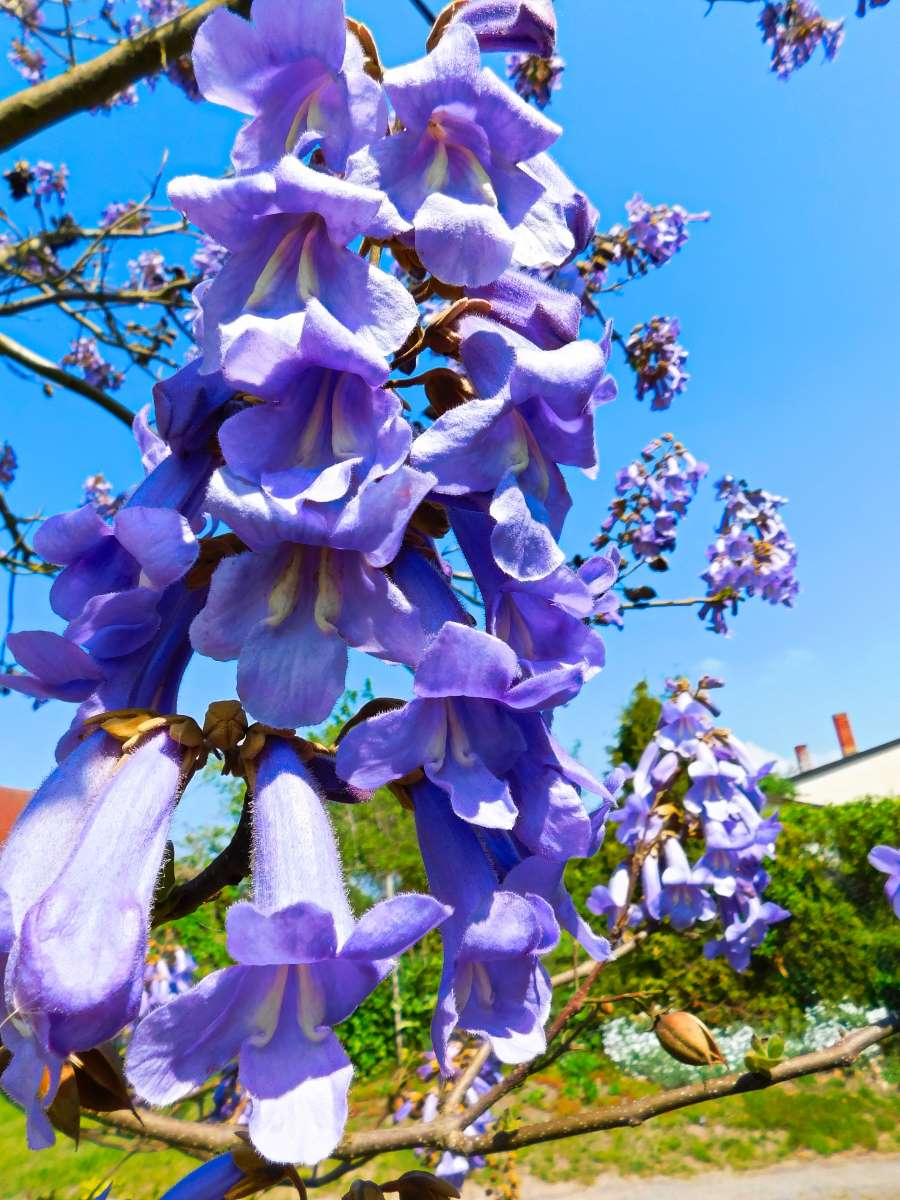Description
Paulownia –
There are 6-17 species, some fast growing, deciduous trees in this genus. They are found in woodlands in Eastern Asia. They produce thick shoots and usually large, hairy, opposite, heart or 3 to 5 lobed, mid or yellow green leaves. The flower buds are formed in autumn, and open, before the opposite, large leaves appear, to bell or trumpet shaped, foxglove like flowers, borne in terminal panicles. Grown for their showy flowers, they make spectacular specimen trees. They grow and flower best in climates with long, hot summers. They may be grown coppiced or pollarded, which will produce very large, ornamental leaves.
Grow in moderately fertile, well drained soil in full sun with adequate summer water. Where not hardy, shelter from cold, drying winds. Flower buds will be killed during hard winter.
Prone to canker, dieback, powdery mildew, wood rot, and mushroom root rot.
P. tomentosa – P. imperialis – Empress Tree – Foxglove Tree – Princess Tree – Royal paulownia – This fast growing, broadly columnar to spreading tree from China, Korea and Japan grows 40-50′ feet tall and 30-40′ feet wide. It produces paired, heart shaped, sometimes shallowly lobed, bright light green leaves, to 12″ wide, hairy above, densely hairy beneath and turn yellow brown in autumn. In late spring it bears fragrant, pale violet flowers, 2″ long, with purple and yellow marks inside, are held in large upright panicle s consisting of 50 to 60 flowers, appear as the leaves emerge. Very tolerant of atmospherical pollution and poor soils.
Zones 5-8





